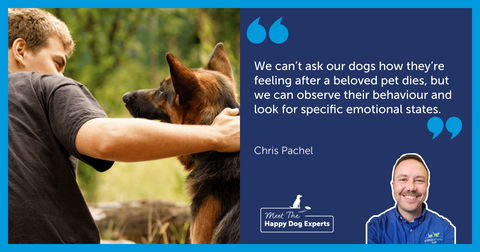
What Do Different Dog Barks Mean?
Much like us humans, our pups use sounds as a way to communicate. This is one of their main ways to communicate, so it’s unsurprising there are lots of different noises they can make. If you have a specific breed of dog like a Husky, for example, you’ll know they have a reputation for howling. Basset Hounds on the other hand can be known for sounding sad!
Learning to recognise your dog’s body language and understanding the influence of any environmental factors can both be great tools to understand what different dog barks mean. Keep reading to learn all about the different sounds our canine pals use to communicate.
Barking
Depending on the breed of dog, you may find that the sound of a dog barking can be incredibly varied. Some barks are deep, whilst others are higher pitched depending on the size of the pup.
Dogs will often bark when they detect something important. This could be something they see outside, an unfamiliar noise, or to even get your attention. Dog barking was originally an alert function, but dogs have discovered it is a great means of communicating many things to their humans.
Another way to determine what different dog barks mean is to listen to the pitch of the bark. Lower pitches can suggest your pup is trying to protect themselves from danger. Higher pitches may suggest your pooch is feeling insecure, worried, or distressed. Listening out for these indicators means you can have a better understanding of your dog’s language and what they might need from you.

Baying
Baying is another type of communication dogs are known for, and is very common amongst Beagles in particular.
As the sound of a dog baying can travel well, Beagles use this to alert their humans when they have found a scent while hunting, leading them in the direction of the prey.
Whining
This type of dog language can indicate your pooch needs something from you. For instance, they could be feeling worried, frustrated, or they may just be craving your attention! However, you shouldn’t be surprised if a pooch is whining simply because they’re excited, too.
Whining often takes the form of a high-pitched sound, usually with the mouth shut. You’d commonly hear this if your pup needs to go outside to the toilet, or when you have just come home and they are excited to see you.
Howling
Howling is a sound that can be carried over a long distance, so it is a fantastic way for dogs to communicate with other dogs or even their humans. Howling can also be triggered by loud noises such as sirens or music, letting you know that they’ve heard something.
It can also be a way for dogs to show they are distressed. You may notice a distressed dog howling when they have been left home alone. If you are struggling with this, check out our dedicated guide for more info.

Growling
Growling is often used by pooches when they are afraid, angry, not wanting to share, or in pain. It is best known as a warning and humans should use caution around any dogs displaying this behaviour. We recommend checking the situation, trying to reduce your dog’s stress as much as possible and giving them space where you can.
That being said, we can often see pups growl during play too. This is absolutely normal and doesn’t necessarily mean play has turned nasty. In this situation, it would be best to assess the dogs’ body language. Are they relaxed and taking in turns to be in charge of the play? If so, this is known as play growling. If not, it may be best to separate your pup from the situation and give them time to calm down.
If your dog makes any noises excessively, or there has been a change in how often or when your dog is barking, we recommend contacting your vet. There could be an underlying medical cause for this behaviour, and it is always better to proceed with caution. Consulting with a qualified animal behaviourist can also be beneficial, as they are able to work with humans and their pups to devise a plan to address this behaviour.
Moreover, if your pup is finding something stressful, we recommend looking at how you as their human can minimise this for them in future. Understanding your dog’s body and physical language will guide you to help them in future situations.
If you want more information about dog barking or dog communication, you can check out our other blogs. You can also sign up to our newsletter to stay up to date with all the latest guides and information!







































